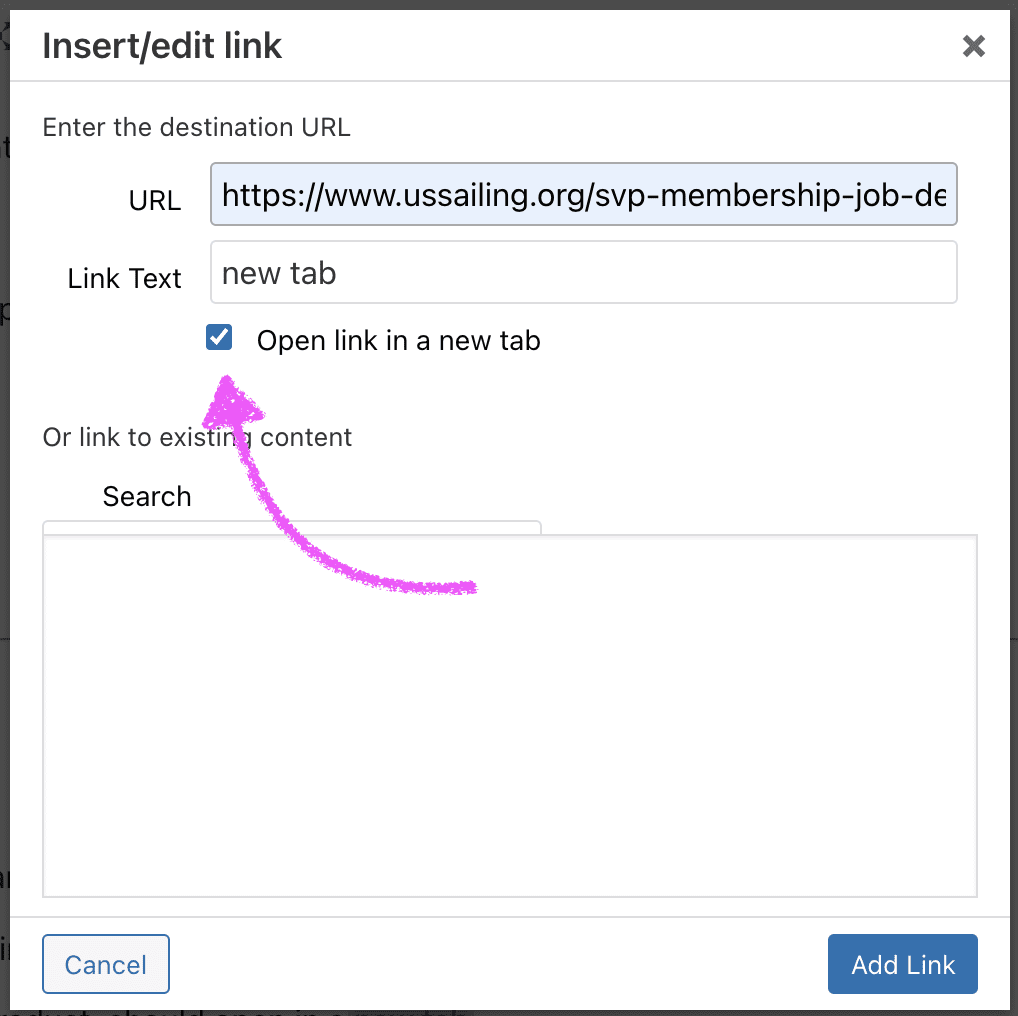Style Guide for Editing USSailing.org Pages using the Rich Text Editor

The Rich Text Editor is the most common way to edit and add information on the US Sailing websites. Below are the rules of when and how to edit using the editor.
Tips
- When copy and pasting items from a word document, please copy and paste the copy into Microsoft Notepad or Apple Text edit first. This will strip the formatting and create clean text on the page. Then you can style the copy the way you'd like
- Clickable buttons have to be coded manually. To place a button, please create a Spiceworks ticket.
Headers
Heading 1
Only for the main title of the page. Notes the MOST important elements of the page. Should be used sparingly. This will usually be made automatically when a page is created.
Heading 2
This most common heading used for the section(s) of the page. Can be used more than once. It needs to be its own header and NOT placed in paragraphs. Creates a lines to break up sections of text.
Heading 3
Less important information. Used when you want to add a little pop to a section.
Heading 4
Less important information. Used when you want to add a little pop to a section.
Heading 5
Least important information. Used after a paragraph to denote citations, P.S.'s, and temporarily updates such as COVID information.
Heading 6
Not used for USSailing.org
Links
- Links should only be styled with the standard styling and shouldn't normally be Bold or Italics.
- Links staying within the US Sailing ecosystem should open in the same tab.
- Links leaving the US Sailing ecosystem should open in a new tab.
- Adding buttons can be done via a Spiceworks ticket. They require coding and special attention
- Red Buttons are US Sailing default
- Blue Buttons are secondary
Paragraphs
Paragraphs should be APA sentence case. Use ALL CAPS, bold, and italicize sparingly. Don't overdo it. See Bold and Italics below for rules.
Example: ORC is globally recognized in local, national, and international races making it the most popular measurement-based rating system in the world. With primary interests among European race circuits, the annual ORC World Championships draw international attention to the rating system. The ORC has been recently featured in several areas of the US, including the Galveston Bay races in Texas, Charleston Race Week, the Chicago Mac and Bayview Mac races as well as local races in Chesapeake Bay, Biscayne Bay, and New England.
Paragraph with links
Example: The ORC Rule relies on a Velocity Prediction Program (VPP) based on standard measurements defined by the Universal Measurement System (UMS). More information on measurement may be found on our Services page. The rating calculator outputs a multi-number rating, suitable for various scoring options and course configurations. While ORC Club and ORC International certificates differ with respect to measurement criteria, they rely on the same calculation routine. As a result, Club and International certificates may be scored consistently with each other. The ORC VPP is updated annually and all rules, regulations, certificates and VPP documentation are freely available to the racing community. ORC scoring options include Time-on-Distance, Time-on-Time, Triple Number, and Performance Curve Scoring. In 2021 all ORC certificates include custom scoring options tailored to specific races and events. An explanation of these options for US and Canadian events can be found here.
Bold and Italics
Use bold and italic as little as possible. They are tools for emphasis. But if everything is emphasized, then nothing is emphasized. Also, because bold and italic styles are designed to contrast with regular roman text, they’re somewhat harder to read. Like all caps, bold and italic are fine for short bits of text, but not for long stretches.
Headers should never be bolded or italicized.


